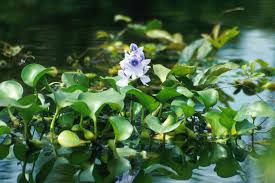Shaky tooth often occurs from periodontal tissue damage. It is caused by the Actinobacillus actinomycetemcomitans (Aa) bacteria with a potential virulence factor to damage the periodontal tissue that functions as teeth brace tissue. The bacteria are major cause of disease in periodontal tissue known as aggressive periodontitis. The hallmark of this disease is attacking young individuals, under the age of 35 years with progressive damage to the alveolar bone. Until now tartar is the biggest cause of shaky tooth commonly found in individuals with this disease. But through clinical examination, from individuals with aggressive periodontitis periodontal tissue damage was found characterized by increasing depth of the gingival sulcus, more than 3 mm, especially in the first molars and incisors, both in the maxilla and mandible. If periodontal tissue damage caused by Aa bacteria is not treated, it will cause shaky tooth, position change, even tooth loss.
The problem becomes even more complex, if the lost tooth is upper front tooth and affect the aesthetic factors of the face. This condition will interfere with one’s appearance, moreover the disease attacks individuals at a relatively young age who still prioritize aesthetic factors. Therefore, effective and easy handling solutions are needed. One of them is by utilizing wild water hyacinth plants. According to the references, water hyacinth plants have potential chemical contents functioning as antibacterial. The leaves of water hyacinth contain phenol compounds, terpenoids, flavonoids, and alkaloids. They have antibacterial traits. Based on this potential, the author saw an opportunity to utilize water hyacinth leaves in the treatment of aggressive periodontitis caused by Aa bacteria.
Water hyacinth is a plant that grows wildly on the surface of the river and is often considered as a plant that disturbs ecosystems in water. Uncontrolled growth of water hyacinth can cause flooding because river flow is obstructed. The wild growth of this plant will cover the surface of the water, sunlight cannot enter the river because the sun’s rays are needed by waste decomposing bacteria living under the surface of the water. Its existence as a nuisance makes them often thrown away. Abundant results of disposed water hyacinth plants can facilitate the availability of raw materials if later it is used in the field of dental health.
In order to prove the argument on the positive benefits of water hyacinth, a study was conducted on the effect of water hyacinth leaf extract on the growth of Aa bacteria in vitro. Furthermore, with the results of the extract, an inhibitory test was carried out on the Aa bacteria. The method used is series dilution with the concentration of water hyacinth leaf extract: 100%, 50%, 25%, 12.5%, 6.25%, 3.125%, 1.56%, 0.78% and 0% as a control.
The results of this study indicate that the water hyacinth leaf extract with a concentration ranging from 100% to 6.25% can significantly inhibit the growth of Aa bacteria. Aa bacterial growth began to appear at a concentration of 3.125% and showed an increase until it reached the extract concentration of 0% (control). At the extract concentration of 0.78%, the growth of Aa bacteria did not show any significant difference with control. This shows that the water hyacinth leaf extract can inhibit Aa bacteria with a minimum concentration of 1.56%.
These results prove that the water hyacinth leaf extract has the ability to inhibit the growth of Aa bacteria. The mechanism of inhibition of the growth of Aa bacteria is generally caused by the presence of antibacterial compounds contained in the water hyacinth leaf extract, such as phenol, terpenoids, flavonoids, and alkaloids. This potential compounds are able to disrupt the permeability of gram negative bacterial cell walls which can result in the release of intracellular substances needed for bacterial life, so the bacteria will eventually die. Aa included as gram-negative bacteria. So it can be concluded that the growth of Aa bacteria can be inhibited by water hyacinth leaf extract due to potential compounds it contains. The results of this study can be used as a basis in making herbal medicines to treat aggressive periodontitis caused by Aa bacteria. If the severity of aggressive periodontitis can be inhibited by the water hyacinth leaf extract, then shaky tooth can also be inhibited and tooth loss can also be prevented. So it can be beneficial to the dental function and facial aesthetics of individuals who experience aggressive periodontitis.
Author: Dr. Agung Krismariono, drg, MKes, Sp.Perio (K)
Details of research can be viewed here:
https://innovareacademics.in/journals/index.php/ajpcr/article/view/33162
Yasinta Izzah Afidati, Irma Josefina Savitri, Agung Krismariono. Inhibition activity of Water hyacinth leaf extract (Eichhornia crassipes) against Aggregatibacter actinomycetemcomitans. Asian Journal of Pharmaceutical and Clinical Research. 2019.12(6). 122-125





